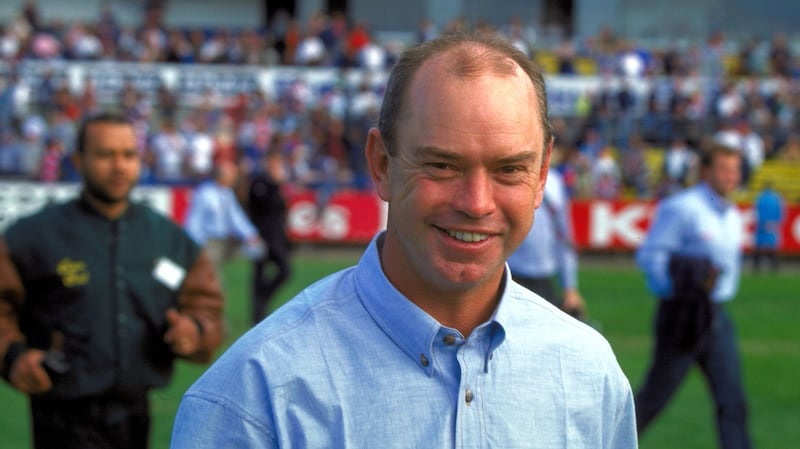With the GAA about to contemplate what rules to change in order to reform football, the game with which it has most in common is also set to embark on a similar course. A week ago the AFL introduced a package of nine changes to Australian Rules, intended to address concerns that will sound familiar to those following the debate Gaelic football.
The past 15 years or so have seen the rise of ultra-defence and possession-based – as opposed to transfer – play in this part of the world but a similar process has been under way in Australia with many of the same challenges arising: the abandonment of fixed-position structures, the advent of defensive systems and the decline in what made both games exciting – and what continues to do so in hurling: the ball in play and frequent contests for possession.
"We've had exactly the same discussion," says Patrick Keane, once well-known to Irish reporters on international rules duty as the AFL's media relations manager for the past 19 years but now working in the organisation's head office.
According to the official statement, the changes were “the product of the AFL’s game analysis team via the new competition committee (comprising representatives of the clubs, players and AFL) considered ten years of data and insights, and identified trends that are shaping the way the game is played”.
The outcome is that nine new rules will be introduced when the new season begins next spring. In intent and substance they are fairly recognisable to an Irish audience.
Two centrefielders
For instance, at restarts, players will have to line up in their respective sectors of the field, three by six in the 18-man Australian game, just as it is proposed that two centrefielders only from each team be allowed line up between the 45s in the GAA’s proposals.
“There are three major reasons why we’ve made reasonably significant changes at the end of the season,” says Keane. “One is that we’ve had our lowest average scoring season in 50 years, since 1968, so that’s a real issue for us and secondly, the amount of congestion around the ball with guys just following the ball is a serious concern for us in how our game looked.

“We don’t think it’s designed to be played that way; players should be spread around the field so forcing guys into particular positions at each restart is what we’ve elected to do going forward from next year.
“After every goal is scored there must be six players inside the forward 50 arc and one of them inside the goal square, six guys inside the defensive 50 arc, one in the goal square, four in the centre square and two wing men must be exactly that, somewhere on the wing line.”
The proposals emerged from a widespread consultation process over the past year and will be introduced on a permanent basis.
The impact of modern game and the success of coaches like Mick Malthouse and Ross Lyon at the top level followed the evolution of tactics pioneered by Fremantle Dockers coach Gerard Neesham 20 years ago, encouraging the retention of possession and that pressing the player in possession rather than committing to the tackle.
Keane identifies another significant turning point in the way the game was approached by coaches.
“Once coaches had access to ‘behind the goal vision’ in about 2005 and 2006 and were able to coach players where to stand at particular times when the ball was coming and set up defensive systems. That’s when we began to notice really significant change.”
Avoid congestion
Just as the GAA is trying to redress the growing imbalance between teams in possession and massed defences, the AFL are attempting the same thing by moving the mark back five metres after a point (behind) is scored to give teams a chance to build play and ensure fair contests – at present the chances of working the ball up field for a score from these restarts is according to Keane, “something like only a nine per cent chance”.
Restarts after goals are being regulated to avoid congestion around the middle.
“Even at the start of games this year with some of our poorer sides, they were starting eight and sometimes nine in defence. We’re saying now, ‘you can start six and then if you want to run back as soon as the ball is bounced – well, be aware that your opponents are going to be free’.
He accepts that there hasn’t been a unanimous welcome for the changes but is optimistic that they will achieve the intended effect.
“These are intended to encourage more one-on-one contests. That’s what we’re looking for. We’re pretty confident internally that these changes will work. Views across the football public are mixed. We still have people who say we shouldn’t have done anything and others who say we’ve done this too late and others who say that this will work.
“Our media is extraordinarily conservative here and chunks of our coaches are but our players are more accepting. I think they have wanted a less rigid game. Change happens a bit in our game and obviously we have a lot of people who get very upset about that but in the end we decided this is the way we need to go.”
The GAA must envy the comparative simplicity of that process.












